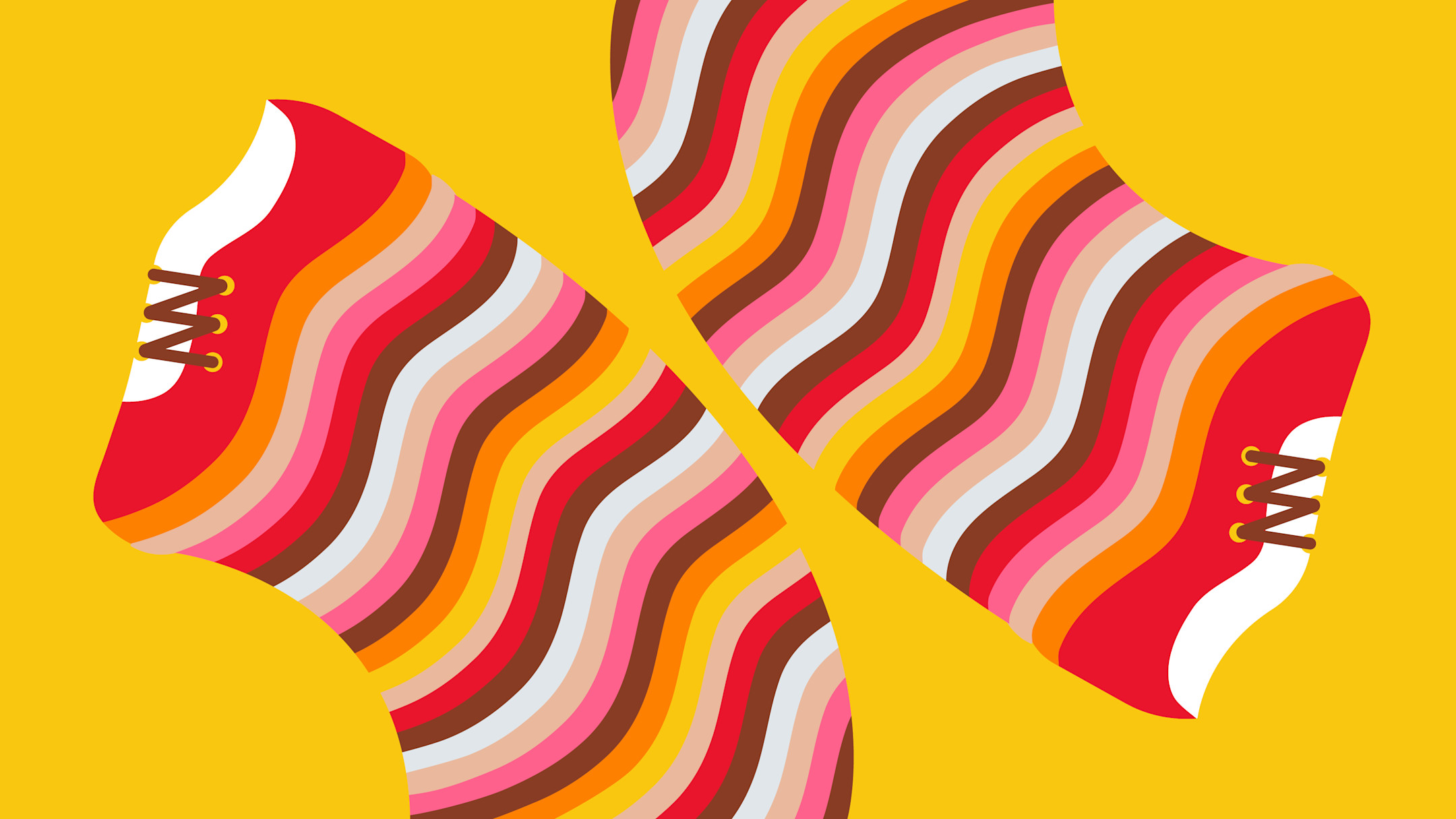Illustration by Jennifer Tapias Derch
Non-fungible tokens (NFTs) are no passing fad. In 2021, users sent more than $44.2 billion of cryptocurrency through NFT marketplaces, up from just $106 million in 2020, according to a report by blockchain analytics company Chainalysis.
While NFTs have propelled new levels of customer engagement, loyalty, and community across every vertical, one area where NFTs hold particular promise is the fashion industry.
The fashion industry has always set the latest trends, and NFTs are no exception: 17% of brands featured in the Vogue Business Index have already worked with NFTs in some capacity.
So how will NFTs change fashion ecommerce, what new trends will define the industry, and most importantly, how can businesses prepare for—and take advantage of—the rapidly evolving business landscape? We’ll cover all of this and more.
Table of contents
- A refresher on NFTs
- 6 benefits of tapping into NFTs for fashion ecommerce businesses
- A blueprint for fashion ecommerce NFTs
- How to start with an NFT strategy: Tips and best practices
- Risks and pitfalls fashion brands should consider around NFTs
- How Shopify can help
What is a NFT?
NFT, a non-fungible token, is a digital asset recorded on the blockchain that can be traded or sold. Fashion NFTs are typically digital assets created by a brand.
Let’s break down the definition to fully understand its meaning.
- NFT: Each NFT is one-of-a-kind. Unlike dollar bills, gold, etc., NFTs are not interchangeable, because each token has a unique value that cannot be replicated.
- Token: A unit of data, stored on a blockchain and associated to a specific crypto wallet, identified through a digital asset such as a photo, video, or GIF.
- Blockchain: A shared and decentralized database that facilitates the process of recording transactions and tracking assets in a network, guaranteeing nobody can modify the history of the token’s ownership.
NFTs have taken the fashion industry by storm lately. Data from Vogue Business shows that one in five luxury fashion consumers rate NFTs as exciting for the industry.
Brands are taking note, too. Streetwear brand The Hundreds, a Shopify Plus merchant, launched NFTs called the Adam Bomb Squad: 25,000 unique illustrated combinations of the brand’s signature bombs and backgrounds.

Source: The Hundreds
The Adam Bomb Squad NFT collection has enjoyed great success so far. As NFT Now reported, the brand made more than $50 million in sales volume on OpenSea from this NFT collection alone.
What did they do right? Each Adam Bomb Squad NFT owner gains access to five main benefits:
- Free ABS-exclusive Adam Bomb Squad T-shirt (one per wallet)
- Early access to new drops
- ABS-exclusive drops
- ABS-exclusive events, both digital and physical
- Fast lane privileges at warehouse sales
That’s not the only brand taking notice: Dolce & Gabbana set a record of nearly $6 million for a nine-piece collection of digital NFTs, while the luxury clothing brand Burberry dropped its NFT collection in Mythical Games’ Blankos Block Party blockchain game.

Source: Mythical Games
At the start of 2022, Balmain and Barbie also unveiled their new partnership, featuring ready-to-wear pieces, accessories, and exclusive NFTs.
And this is just the tip of the iceberg. The NFT gold rush encouraged many fashion businesses to explore the potential of digital collectibles and to prepare for the new chapter of fashion ecommerce.
Fashion's foray into NFTs may hint at the next ecommerce battleground. Digital collectibles bring a new level of exclusivity and even an alternative revenue stream for fashion businesses. To top it off, NFTs can also be the foundation of a strong community, which will be crucial for long-term success in the next decade.
Let’s explore the lessons these brands have learned to make their NFT ventures so successful.
6 benefits of tapping into NFTs for fashion ecommerce businesses
The reality is: Creating an NFT collection just because others are doing it won’t guarantee business success.
Focus on the actual utility for the customer first. I see so many brands and individuals entering the NFT space because it’s hot, with very little vision for the future. Most of these projects end up being worthless because there was no original goal in mind. I would bet that, down the road, half those brands won’t be around and the other half will be focused on the next hot thing.”
—Leland Grossman, Director of Marketing at KYX World
Businesses have to build a strategy and offer customers tangible, long-term value. Let’s look at some of the benefits of launching NFTs for fashion businesses.
1. Build a community and give that community a way to represent itself online
A strong community is one of the key pillars of successful ecommerce brands. Our 2022 Future of Commerce report revealed that 40% of brands are looking to create more ways for customers to interact with them in 2022 and beyond.

Behind every successful NFT project, there's a strong community where customers can connect with your brand and supporters can form deep and lasting connections with one another. The ownership of your brand’s digital collectibles gives customers a financial incentive to bring more people and become true brand ambassadors.
The streetwear brand Mishka NYC entered the space with a collection of 6,696 NFTs known as The Keep Watch Crew (KWC), marked by the brand’s eyeball logo. According to Mishka NYC, the KWC is a ticket into what it calls the MISHKAVERSE. Some of the benefits include lifetime discounts and access to exclusive NFT and merchandise drops.
With membership to this global, decentralized community, streetwear enthusiasts can help chart the brand’s future course.
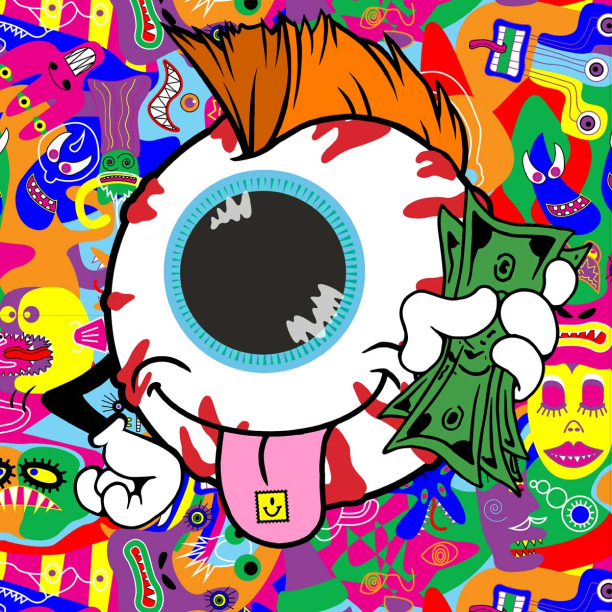
Source: Mishka
2. Create exclusive, personalized experiences for your community
Exclusivity fuels desirability. Customers are hungry for personalized, tailored experiences from their favorite brands. According to Epsilon, 80% of consumers are more likely to make a purchase when brands offer personalized experiences. Creating an NFT collection that gives members exclusive benefits can help strengthen customer connections.
NFTs let customers own a piece of your brand and show off their brand association as a badge of honor on social channels. The ownership creates a strong emotional bond, giving customers a reason to keep coming back and boosting customer lifetime value. A great example is the streetwear brand The Hundreds, whose Adam Bomb Squad NFT collection gives customers access to exclusive benefits.
Fashion brands can drive member-based exclusivity. One example is The Hundreds with their Adam Bomb Squad NFTs—they released a limited drop accessible only to NFT holders. If you’re an up-and-coming fashion brand, use this strategy to reward and engage your top fans.”
—Leann Abad, Freelance marketer
3. Tailor unique loyalty programs
Tailored loyalty programs using NFTs can give brands a competitive advantage in the future of commerce. With NFTs, fashion brands can give customers tokens for early access to new products, discounts, admission to exclusive events and private communities, and much more.
Dolce & Gabbana debuted its NFT collection, Collezione Genesi, which has physical, digital, and experiential value. Besides the physical version of Dress from a Dream, custom-fitted to the wearer, an original signed sketch, and a custom digital recreation of the dress, the NFT holder receives two-year access to Dolce & Gabbana Alta Moda, Alta Sartoria, and Alta Gioielleria couture events in Italy. This way, the NFT encourages the buyer to engage with the brand for two years.

4. Sell digital assets
When implemented correctly, NFTs can unlock a new revenue stream for DTC fashion brands that complements their physical offerings with digital assets. In this context, NFTs are a sort of virtual stepping stone toward the metaverse and the future of customer interactions.
Nike made its first move into NFTs by partnering with the online gaming platform Roblox to debut Nikeland. Customers in Nikeland can choose from a series of pre-built games or customize their own. They can also use accelerometers in mobile devices to incorporate real-life movements such as long jumps and speed runs into the game. For a more immersive experience, customers can browse the Nikeland showroom to dress their avatars, choosing different shoes, apparel, and accessories.

Image source: Roblox
5. Build excitement for a new product launch
One way brands can leverage NFTs is to organize a pre-sale limited drop of physical products and link each product to a unique NFT to offer additional value and gauge customer interest.
For example: Sneaker brand Flowers for Society made its first product drop available through pre-order, linking each product with an NFT. Everyone who purchased the sneakers gained access to the Flowers for Society metaverse community, unlocking exclusive access to future sneaker releases, limited editions, and collaborations.

Image source: Flowers for Society
Adidas also made its first NFT drop, Into the Metaverse, with NFT pioneers GMoney, PUNKS Comic, and Bored Ape Yacht Club. The drop of 30,000 NFTs, priced at 0.2 ETH each ($800) sold out almost immediately, generating over $23 million (6,000 ETH) in revenue, according to Cryptobriefing.
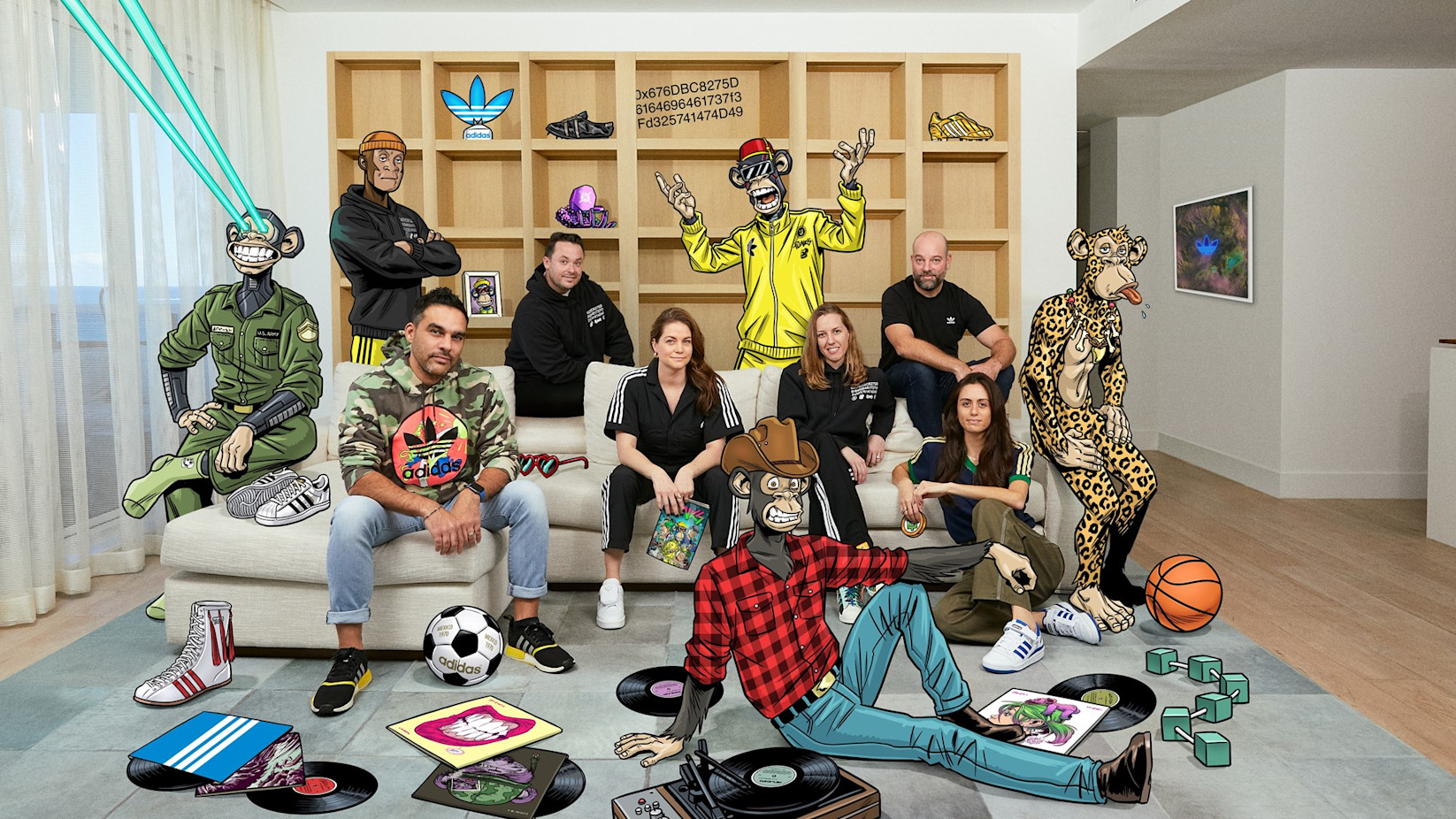
Image source: Adidas
6. Get ready for the metaverse
By 2026, one-fourth of people will spend at least one hour a day in the metaverse for work, shopping, education, social, and entertainment, according to Gartner. That said, it’s no surprise fashion brands are scrambling to take a leap into the metaverse and stay relevant.
The Spanish global fashion giant Zara partnered with the South Korean label Ader Error to launch its first NFT project. Customers who purchase any of the items in the AZ Collection have their own virtual avatar in the metaverse, with the same clothes they purchased online.

Image source: Ader Error
With this move, Zara paved its way to the metaverse. According to Bloomberg, by 2024, the global metaverse revenue opportunity could reach $800 billion. Mind-blowing, right? It’s no wonder fashion brands are jumping on the bandwagon.
A blueprint for fashion ecommerce NFTs
Success with NFTs isn’t reserved for the largest fashion brands. A new generation of tech-savvy DTC fashion brands are shaking up retail, setting standards for unique brand engagement through NFTs. Let’s look at a few examples and how you can implement them.
Test the waters with free NFTs
Launching a free NFT collection can help you test the waters with digital collectibles. You can also use this strategy to collect first-party data from your customers, which will become a necessity after the death of third-party cookies.
Menswear brand BoohooMan combines cutting-edge design with an affordable price tag to bring the latest styles to its customers. The fast-fashion brand entered the metaverse with free NFT apparel, becoming the first affordable fashion brand to launch a digital collection. The eight-piece collection of 3D clothing NFTs includes t-shirts, outerwear, tracksuits, and hoodies.

Image source: BoohooMan
This is only the beginning of BoohooMan’s digital fashion future. The brand has only dipped its toes into the metaverse so far, and it’s excited about new NFT collections, collaborations, and digital fashion pieces.
Merge digital and physical products
The long-awaited meta-economy will power new opportunities for brands and will impact how customers communicate, shop, and socialize. Experimenting with NFTs allows you to add a digital layer to your physical offering. In other words, real-world purchases that unlock in digital worlds. Soon customers will buy branded products for them and their avatars.
New York-based digital fashion brand Cult&Rain launched its first NFT sneaker collection tied to high-end physical footwear, bridging the gap between digital and physical reality. The collection consists of 1,406 4K animated NFTs matched with 1,406 trend-setting physical sneakers for collectors. The Genesis Drop is made for crypto enthusiasts who have an affinity for stunning 3D NFT artwork and cutting-edge designs.
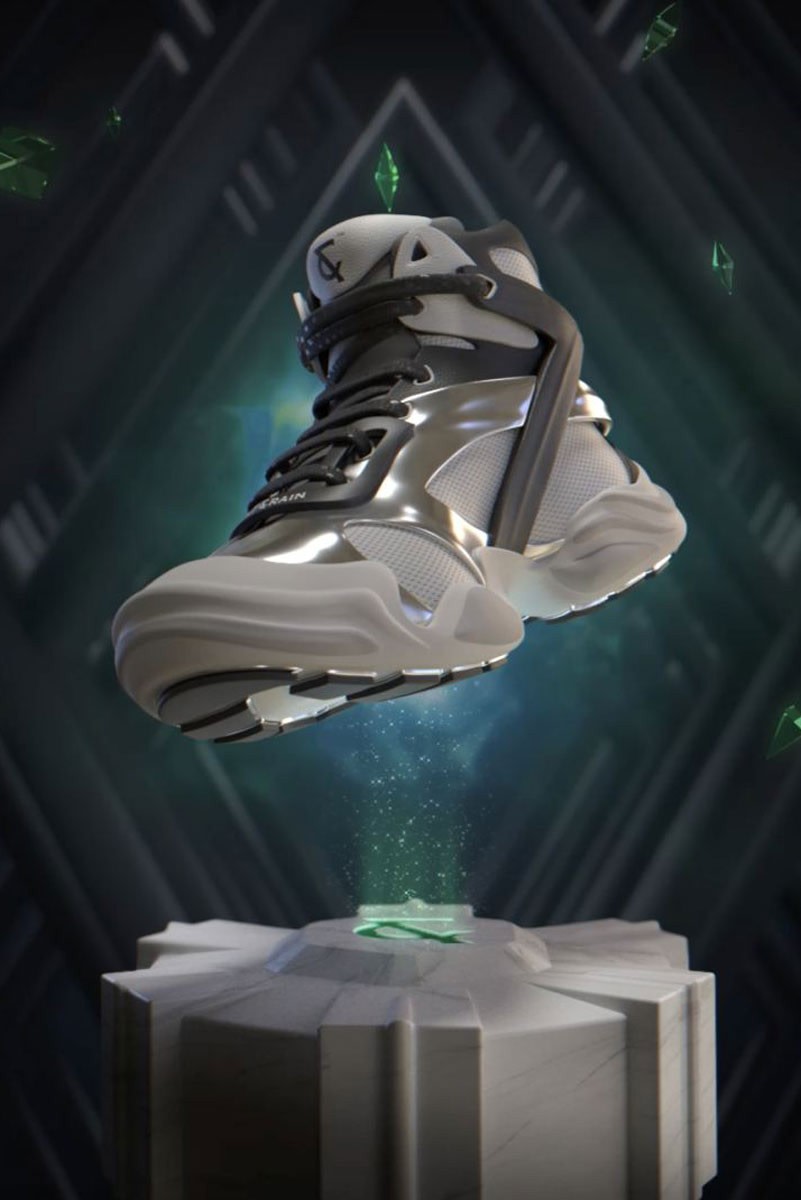
Image source: Cult&Rain
Cult & Rain plans to release additional physical utilities related to NFTs, including branded discounts, airdrops, and VIP access to real-life and virtual events, such as a metaverse fashion show.
Partner with an existing NFT community
If you want to engage with NFT projects but you’re not sure what the right way to do it is, you can always partner with an existing NFT community. NFT collectors have a strong sense of belonging, and the ability to own branded merchandise gives them a piece of ownership of their favorite brand.
The legendary clothing brand Fred Segal collaborated with a community-run creative studio The Heart Project to launch a collection of original apparel for Valentine’s Day. The Hearts x Fred Segal capsule was available for purchase in-store two weeks after the launch and on Fred Segal’s website.
Some of the most successful drops we’ve seen in fashion have come through unexpected partnerships with designers and influencers. NFTs offer expanded opportunities to surprise and excite customers while increasing exposure for both the brands and artists.”
—Jaime Schmidt, Investor at Color Capital
Before this collaboration, Fred Segal partnered with media tech holding company Subnation to launch Artcade, a next-generation retail environment. The company describes Artcade as “the first dynamic retail experience, featuring curated collectibles, limited product drops, an NFT Gallery, and Streaming Studio.”
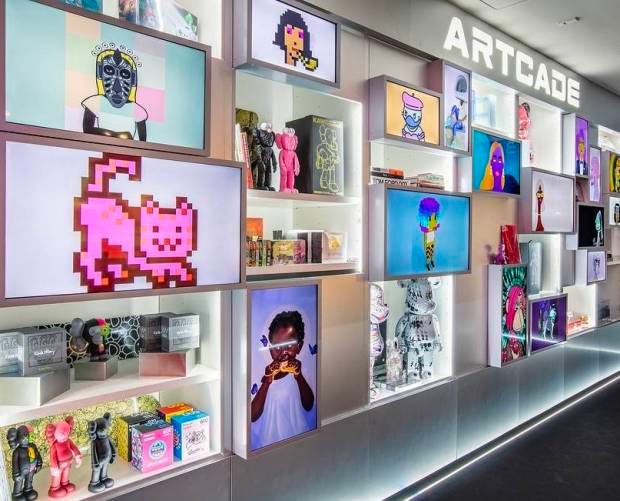
The Heart Project will also display NFTs in-store at the Artcade installation within Fred Segal. In this context, NFTs are slowly making their way into physical retail.
Set the groundwork for environmental sustainability
Cryptocurrency and fashion don’t have the best reputation for environmental impact. Bitcoin, for example, uses the equivalent of half the energy of the entire global banking industry. The good news is not every cryptocurrency has the same environmental impact. Others like Solana have even gone carbon neutral. In short, your environmental impact depends entirely upon you and how you build your NFTs.
If you’re considering NFTs for your business strategy, you can also do it while giving back to the environment. For example, offset emissions from your NFTs by investing in renewable energy for a carbon-neutral collection, or donate to environmental protection organizations. Or you can use Aerial, a Shopify app to offset the carbon impact from your NFTs.
Satoshi Studio, a direct-to-consumer sneaker brand launched in 2018, focuses on sustainability and digital experience.
To help take steps toward systematic and structural change in the fashion industry, Satoshi Studio is bringing transparency to the process by creating high-end products with its own digital twins on the Arianee blockchain—an NFT platform for the luxury and fashion industries. As a result, customers have access to the whole supply chain, material origins, and certifications, directly through the NFT associated with their physical sneakers.
On top of this, Satoshi Studio and Arianee sold two of three pairs of unique sneakers during a live auction at the Ethereum Conference in Lisbon, with profits going to a non-profit organization that protects apes and preserves biodiversity in Borneo and Sumatra.
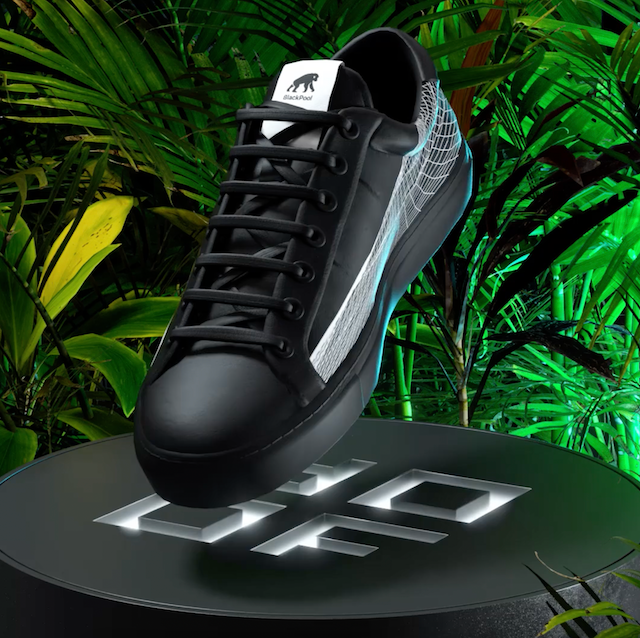
Image source: Satoshi Studio
How to start with an NFT strategy: Tips and best practices
You can’t cannonball into NFTs without a solid strategy in place. Here are some steps you should consider before going into the world of digital collectibles:
1. Define your goals
The first step is to determine your goals. Are you looking for a new revenue stream, or do you want to build brand awareness? Knowing your primary goal can help you map your NFT strategy.
Hype is short-lived, and meaningful change takes time. While it’s important for brands to experiment to understand the space (just like it was when social first came around), let’s not rush into NFT just for the sake of checking the NFT box.”
—Jonathan Colmenares Mendez, Brand Innovation Strategy at sonicboom.nyc
And don’t forget about future utility with NFTs. For example, AdamBombSquad launched their first token-gated commerce access on Shopify in 2021. This takes an old concept from sales—exclusivity—and uses NFTs to offer a completely novel twist. As you define your goals, don’t forget how NFTs will offer opportunities in 2023 and beyond.
2. Analyze different use cases from other fashion brands
There are many interesting use cases out there when it comes to NFTs: from pre-launch of products and selling digital goods to loyalty programs and community building. To implement some of the ideas, see what fits your business and take a page from a successful brand’s playbook.
3. Understand your customers to create a unique experience and offer value
The success of your NFT strategy will depend on your level of understanding of your customers’ needs and aspirations. Why do they love your brand? What motivates them to be a loyal brand ambassador? Discover the answers before jumping into NFTs—it’s the only way to tailor an experience that resonates with your target audience.
"Fashion companies are well-versed in building ways for consumers to co-build their brands, as evidenced by iconic logos like the Nike swoosh to the Gucci horsebit."
Web3 offers an incredible new medium for fashion brands to connect with their community with aligned incentives, building the future together. This could mean digital wearables, collabs with Web3-native creators, NFT-gated exclusive merchandise, or potential metaverse experiences for fashion shoppers. We see growing demand for digital accessories—whether dressing up PFPs or avatars—and innovative fashion brands are jumping in to engage.”
—Avery Akkineni, President of VaynerNFT, a Shopify Plus Partner
4. Consider experimenting with NFTs to assess the opportunity for your business
The best way to see if NFTs are suitable for your business is to test and experiment. There’s considerable potential in digital collectibles, but you need to find innovative ways to use them to attract customers. Before you do, make sure to understand the possible risk implications.
Risks and pitfalls fashion brands should consider around NFTs
NFTs can turn out to be a double-edged sword if you don’t think about the risks and potential pitfalls before making a move. Before you start capitalizing on the NFT trend, think about the following risks and how to prevent them.
Note: This is general information for merchants and does not contain/is not intended to provide legal advice. You should consult your own legal counsel to determine how laws impact your business.
I ask every brand that wants to launch an NFT project: Why? Is it a learning experience, a PR stunt, a customer engagement/loyalty play, an early iteration of a metaverse fashion line? One-off project or a sustained multi-layered effort? Depending on the brand’s objectives, specific execution and associated pitfalls can be very different.”
—Magdalena Kala, Consumer Investor
Intellectual property rights
NFTs are a form of art. Before entering the world of digital collectibles, think about the intellectual property rights of creators—from designers and coders to musicians and other contributors. Everyone involved needs to be on board with the project.
Once you’ve taken care of that, the next step is to decide on the rights you’ll grant NFT buyers. How will you protect yourself from unauthorized brand use? How do you plan to reserve creator royalties in the event of subsequent sales of the NFT? These policies need to be documented early on in the process.
Although technologies like blockchain can help with authentication, when it comes to NFTs, fashion brands need to be conscious about intellectual property rights (which are not as clear cut in this new world). Issues like copying of digital works, the unauthorized use of their brands by third parties, and a lack of control about subsequent ownership can cause issues.”
—Neil Saunders, Managing Director of GlobalData
Data protection legislation
Another potential risk for businesses is the intersection of data privacy and technology. There’s significant tension between the nature of blockchain technology and the structure of the General Data Protection Regulation (GDPR). The blockchain serves as a decentralized, immutable digital ledger without the ability to delete transactions, which is in opposition to a core principle of GDPR.
What does it mean for brands? When creating NFTs, focus on ensuring data protection compliance through contractual terms and technical solutions. Make sure to adhere to privacy law frameworks and constantly monitor changes in law to be able to react quickly and adjust your NFT strategy.
Financial regulations
Existing regulatory frameworks are not well-designed to address NFTs. As a result, regulatory treatment of NFTs is evolving and varies by jurisdiction.
Another concern related to NFTs is money laundering. The United States Department of the Treasury issued a report titled, Study of the Facilitation of Money Laundering and Terror Finance Through the Trade in Works of Art, which covers how the high-value art market, including certain NFTs, is vulnerable to financial crime.
Environmental impact
NFTs have the potential to disrupt the fashion industry. They also have a potentially harmful side effect: they require a lot of energy to create. Data from Digiconomist estimates a single ethereum transaction’s carbon footprint at 146.81 kilograms of carbon dioxide.
Brands that emphasize sustainability as part of their mission might face a backlash from environmental activists if they engage with NFTs. To avoid this risk, develop a plan to give back to the environment. One way to do so is to offset emissions from your NFTs by investing in renewable energy and conservation projects.
A further problem is the ‘hidden’ costs of NFTs, which, thanks to the blockchain, use vast amounts of computing power and energy to facilitate transactions. Brands need to be conscious of the environmental impact, especially as they push their sustainability agendas.”
—Neil Saunders, Managing Director of GlobalData
A second way to mitigate this risk: Choose other options. Fortunately, the NFT world isn’t built on Ethereum alone. Ultimately, your environmental impact is up to the route you choose.
Bottom line: if you want to launch NFTs and keep your brand environmentally friendly, you can.
How Shopify can help
There’s no doubt that 2021 was the year of fashion NFTs. However, this is just the beginning of a new chapter for fashion ecommerce businesses.
The good news: It will be easier to sell NFTs online using Shopify. Select Shopify Plus merchants in the US may be eligible for our NFT Beta.
In early July 2021, Superplastic, a Shopify merchant, launched its own NFTs in partnership with the auction house Christie’s. This was the first time Shopify made it possible for a merchant to sell NFTs via Shopify Payments.
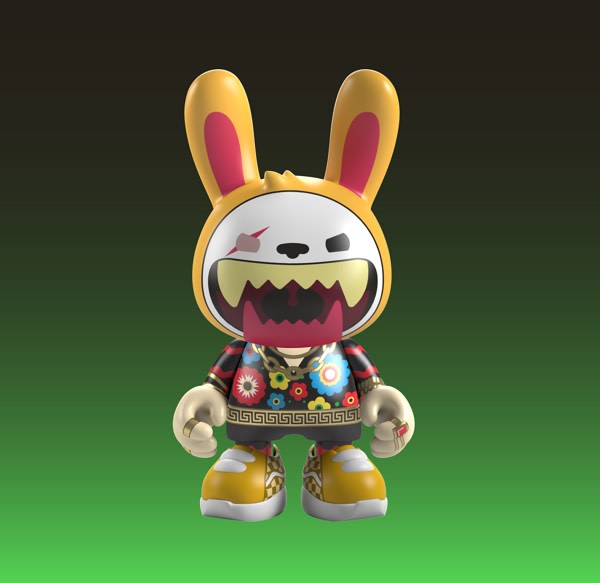
Image source: Superplastic
Later that month, the NBA’s Chicago Bulls worked with Shopify to launch NFTs depicting six championship wins from the 1990s. The NBA’s G League also released NFTs through Shopify, featuring cards of players recently drafted into the NBA.
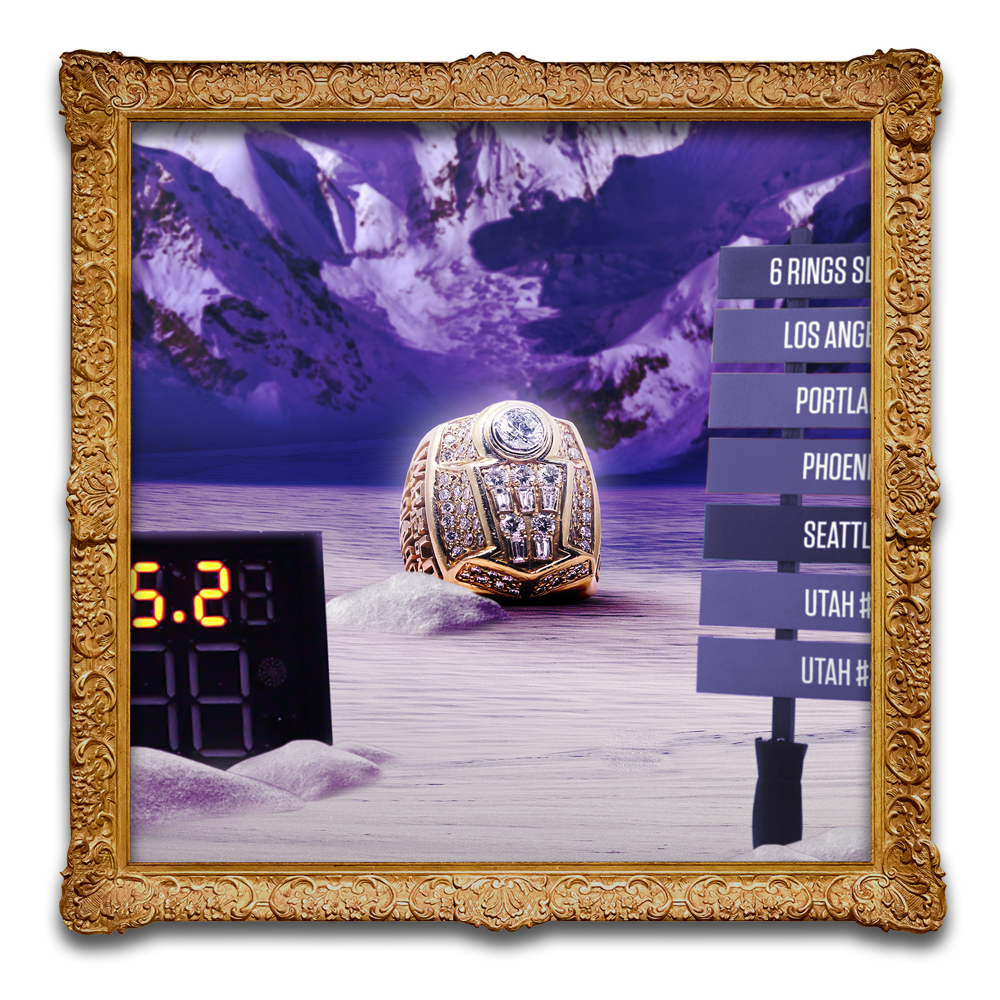
Image source: NBA
The bottom line: Shopify will be making it easier for eligible Shopify Plus merchants to sell NFTs on their own Shopify storefronts.
Fashion NFT FAQs
What are NFTs in fashion?
Fashion NFTs are typically digital assets created by fashion and apparel brands. In some cases, a fashion NFT consists of virtual garments.
Can I sell clothes as an NFT?
Clothes can only be sold as an NFT when they are digital assets. After the fashion NFT is created, then it can be sold, transferred, and resold.
Are NFTs the future of fashion?
It depends. NFTs allow brands to diversify how they connect and sell to customers. NFTs in fashion could be the future.
